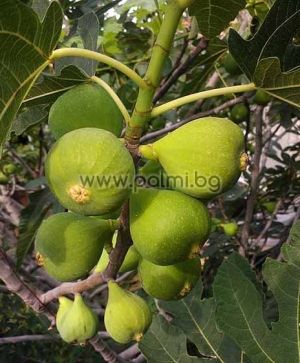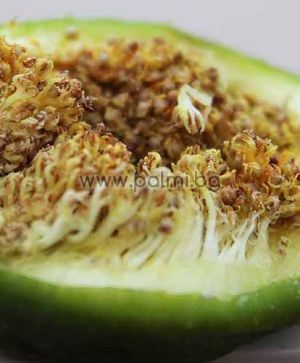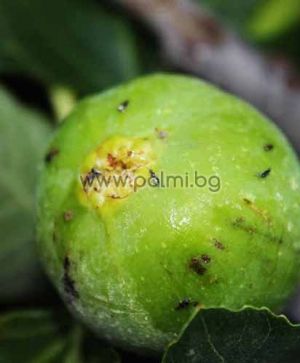Male Fig variety , Pollinator,var.2
-
Code:Ficus carica male var.2
-
Weight:2.000 Kgs
Ficus carica Male var.2, Male Fig Pollinator from Botanical Garden - Plovdiv, Bulgaria
This Male Fig will pollinate all Fig varieties! If there is no pollination, the fruits will remain smaller and with worse quality, than the pollinated fruits. For comparison, please see the picture with cut fruits, the bigger ones are pollinated. The smaller ones are not pollinated.
The common fig is a species of the genus Ficus (Ficus) in Mulberry family (Moraceae). In the genus Ficus there are about 2,000 tropical and subtropical species - trees, shrubs and lianas distributed almost worldwide.
The fruit of all species of Ficus tree is the Fig (syconium), enlarged fleshy and hollow inside, with plenty of tightly arranged flowers on the inner wall. True fruits are the tiny fruits inside, which result from these multiple flowers.
The problem is that these flowers appear in the interior of the figs . How are they pollinated ?
That's the funny thing about these plants. Fig (Ficus carica) and several similar species form two types of fruit : edible figs ( FIGs ) and male figs ( Kaprifigi , Caprifigs). Male figs (Caprifigs) accept the Fig pollinator - fig wasp Blastophaga, which lays its eggs in the female flowers of Caprifigs. Male fig wasp grows, multiplies and dies inside the Caprifig, where it was hatched. The female wasp goes outside the Caprifig through the hole (eye), collecting much pollen at this time. It flies in search of a new fruit at the right stage of development where they lay their eggs.
Fruit Caprifigs (male figs) are usually dry, spongy and sticky or just - inedible ! But they play an important role to help the female fig varieties produce two or any crops.
Caprifigits (male figs) are usually born three crops a year, called Profiki (Profichi), Mamma (Mamme) and Mammoni (Mammoni).
Edible figs (FIGs) had two harvests called Breba (Breba) and main crop.
Edible fig varieties (FIGs) are divided into three types:
1. Smyrna figs, they need pollination to ever set a crop.
2 . The Common figs. No need for pollination, to set crops. Most cultivars fall into this group. For example, Black Mission, Brown Turkey, Celeste, Brunswick, Michurinska-10 and Adriatic.
3 . Intermediate group or San Pedro (San Pedro). Figs, which do not need pollination to set the first crop (Breba), but require pollination for the main crop (in most cases).
Freeze damage starts at temperatures below -18 to -20 degrees C, and the trees freeze to the ground at temperatures below -24 degrees
More information is available on our forum:
Estimated Shipping
 to Plovdiv starts at
€2.85
To a place in Bulgaria starts at
€2.85
to Plovdiv starts at
€2.85
To a place in Bulgaria starts at
€2.85
 Delivery to EU zone starts at
€15.28
Delivery to EU zone starts at
€15.28
 Delivery to EU zone starts at
€32.21
Delivery to EU zone starts at
€32.21
-
Botanical family:Moraceae
-
USDA zone:-18°C (zone 7a)
-
Sun exposure:Sun only
-
Soil pH+:neutral (pH 6,5-7,5)
-
Water need:moderate
-
Category:Fig varieties
-
Ripening:Jun-Jul-Aug-Sept
-
Type (pollination requirements):Caprifig (pollinator)














